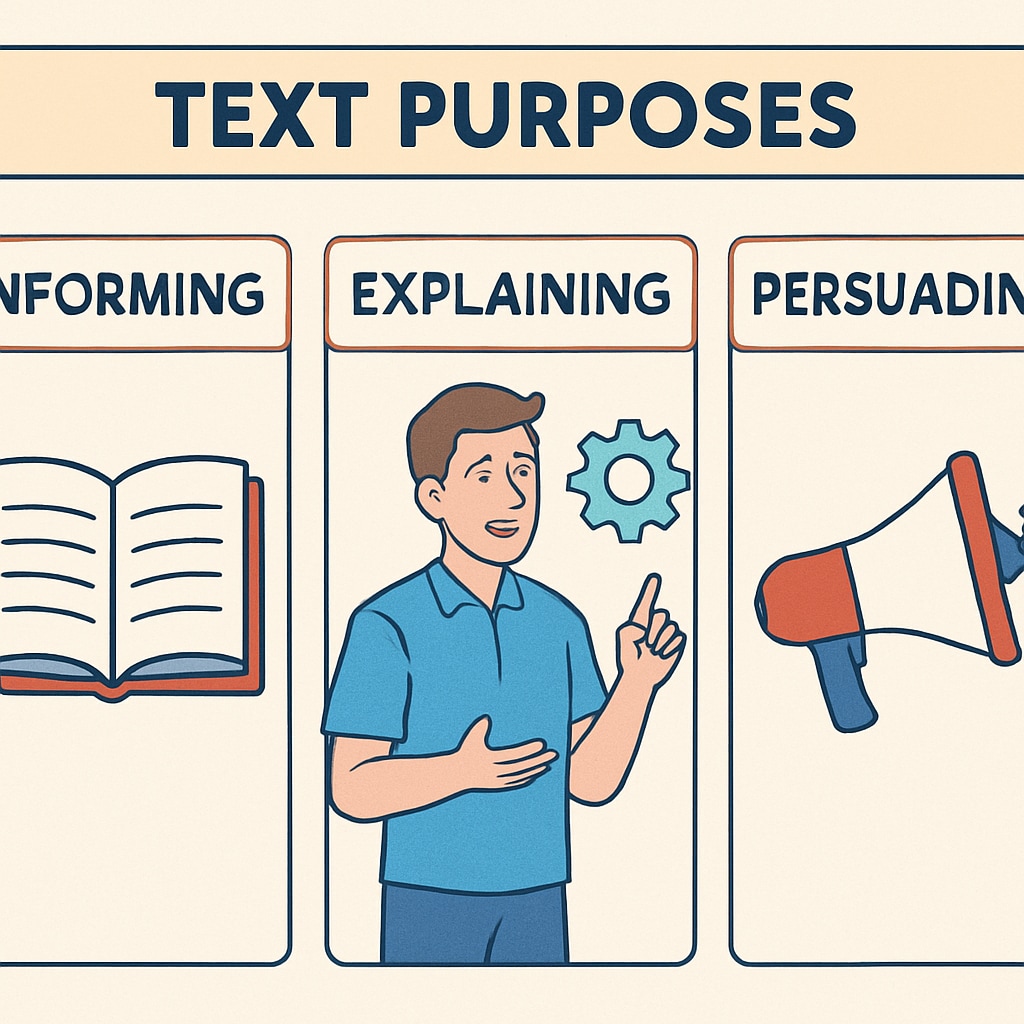Functional Skills English reading exams can be challenging, especially when it comes to identifying the purpose of a text. Accurately discerning whether a passage is meant to inform, explain, or persuade can significantly impact your performance. In this article, we’ll explore the three main text purposes, their distinguishing characteristics, and practical strategies to help you master this skill. By the end, you’ll feel more confident about tackling this common exam hurdle.
Understanding the Three Core Text Purposes
In Functional Skills English reading exams, texts generally aim to achieve one of three purposes: to inform, to explain, or to persuade. Each purpose has unique traits that can help you identify it. Let’s break them down:
- Informing: The goal of an informative text is to provide factual details or raise awareness about a specific topic. Key features include straightforward language, data, statistics, and neutral tones. For example, a news article about a weather forecast is typically informational.
- Explaining: Explanatory texts aim to clarify a process or concept. These pieces often use step-by-step instructions, detailed descriptions, and transitional phrases like “first,” “next,” and “finally.” Think of a manual or a “how-to” guide.
- Persuading: The purpose of a persuasive text is to influence the reader’s opinion or encourage action. These texts often employ emotive language, rhetorical questions, and clear calls to action. For example, an advertisement urging you to try a new product is persuasive.

How to Identify Text Purpose in Functional Skills English Exams
Recognizing text purpose doesn’t have to be complicated if you know what clues to look for. Here are some actionable tips to increase your accuracy:
- Analyze the tone: Is the language neutral, instructional, or emotional? Neutral tones often indicate an informational text, while instructional tones suggest explanation and emotional language aligns with persuasion.
- Look for structural cues: Headings, bullet points, and numbered lists are common in explanatory texts. Persuasive texts may include slogans or bold statements, while informational texts rely on sections packed with data.
- Examine the conclusion: Informative texts often summarize the topic, explanatory texts wrap up by reiterating key steps, and persuasive texts may end with a strong call to action.
- Identify the audience: Consider who the text is addressing. Persuasive texts often target specific groups with tailored language, while informational and explanatory texts are usually broader in scope.
By methodically examining these elements, you can better determine the text’s purpose and improve your overall comprehension.

Common Pitfalls and How to Avoid Them
Even with the right strategies, it’s easy to fall into traps when analyzing text purposes. Here are some common pitfalls and how to sidestep them:
- Overinterpreting the text: Stick to the evidence in the passage. Avoid projecting your opinions or assumptions onto the text.
- Missing subtle cues: Some texts combine purposes, such as informing and persuading. Focus on the primary intent, which is usually more prominent.
- Ignoring context: Always consider the bigger picture. For example, a government leaflet about recycling might inform, but its ultimate goal could be to persuade you to recycle more.
By staying mindful of these issues, you can refine your approach and avoid costly mistakes during the exam.
Practice Makes Perfect
To truly master identifying text purposes, practice is non-negotiable. Here are a few ways to get started:
- Use past exam papers: Familiarize yourself with the types of texts commonly featured in Functional Skills English exams.
- Break down real-world examples: Analyze articles, advertisements, and manuals to practice identifying their purposes.
- Seek feedback: Work with a teacher or study group to review your answers and improve your reasoning.
Consistency is key. The more you practice, the more intuitive identifying text purposes will become.
In conclusion, understanding and mastering text purposes in Functional Skills English reading exams requires a combination of knowledge, strategies, and consistent practice. By focusing on the text’s tone, structure, and audience, as well as avoiding common pitfalls, you’ll be well-prepared to tackle this challenging aspect of the exam.


